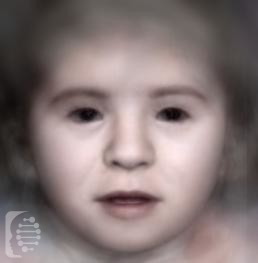What is Fontaine Progeroid syndrome?
Fontaine Progeroid syndrome is a rare genetic syndrome that is often diagnosed before birth.
One of the main symptoms of the syndrome is a severe growth retardation both before and after birth.
The life expectancy of many individuals with the condition is short, with many individuals not living past infancy or early childhood.
This syndrome is also known as:
Craniofacial Dysostosis, Hypertrichosis, Hypoplasia of Labia Majora, Dental and Eye Anomalies, Patent Ductus Arteriosus, and Normal Intelligence; GCM Syndrome; Gorlin-Chaudhry-Moss syndrome; GCMS syndrome; Progeroid syndrome, congenital, Petty type
What gene change causes Fontaine Progeroid syndrome?
Mutations in the SLC2SA24 are responsible for causing the syndrome. In most cases, the syndrome is caused by de novo mutations.
In some cases, a genetic syndrome may be the result of a de-novo mutation and the first case in a family. In this case, this is a new gene mutation which occurs during the reproductive process.
What are the main symptoms of Fontaine Progeroid syndrome?
- The main symptom of the syndrome is delayed growth, both pre and post-birth. This also leads to a failure to thrive, which in many cases can be very severe.
- The absence of subcutaneous fat and premature aging are defining and serious features of the condition.
- Facial features of the syndrome include a triangulate face and broad nasal bridge.
- Genital abnormalities are common, as are hernias.
Possible clinical traits/features:
Umbilical hernia, Reduced number of teeth, Midface retrusion, Ptosis, Short distal phalanx of toe, Aplasia/Hypoplasia involving the nose, Astigmatism, Brachycephaly, Eyelid coloboma, Abnormality of the foot, Abnormality of the metacarpal bones, Short stature, Hypodontia, Hypoplastic labia majora, Hypoplasia of the maxilla, Underdeveloped supraorbital ridges, Short distal phalanx of finger, Hypertrichosis, Hypermetropia, Hypertelorism, Cognitive impairment, High palate, Malar flattening, Dental malocclusion, Craniosynostosis, Coronal craniosynostosis, Coarse hair, Downslanted palpebral fissures, Conductive hearing impairment, Microphthalmia, Microdontia, Abnormality of bone mineral density, Narrow palate, Low anterior hairline, Nystagmus, Upper eyelid coloboma, Sclerocornea, Autosomal recessive inheritance, Patent ductus arteriosus.
How is it diagnosed?
To find out if someone has a diagnosis of Fontaine Progeroid syndrome, it is important to have a consultation and evaluation with a clinical genetic specialist. Specialists may also suggest specific genetic testing or other types of tests to help reach a diagnosis. FDNA’s AI technology can help speed up the diagnostic process by analyzing facial features and other health information.

